Welcome to FISH FOOD TIMES
Feb. 2016 issue No.146

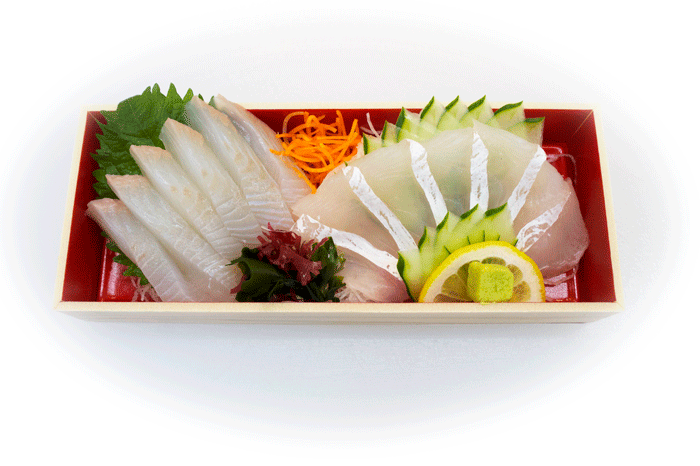
Halibut sashimi
If the image of the above will not be described that it is halibut, or perhaps not to misunderstand that it is anyone Japanese flounder at a very high probability.
This it is the halibut fellow flatfish rather than definitely Japanese flounder is, to prove the author own who made this sashimi with their own hands, that photo is also no doubt because they are the author took.
The original of this sashimi is the halibut in the following image.
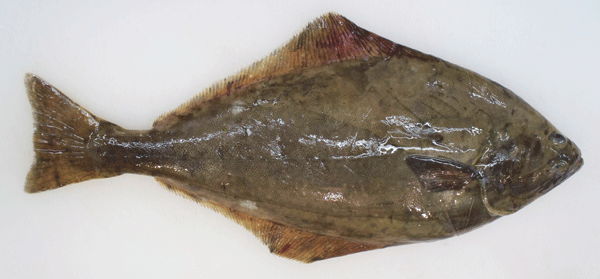
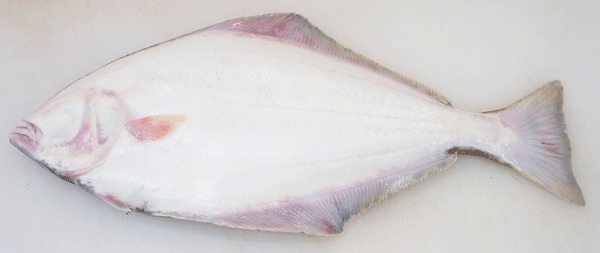
Because the size is stored that it was about certain 1.5kg, is a very small magnitude as halibut, it was perhaps think that it is the parr stage.
White fish body surface which corresponds the bottom of the above image is a beautifully clean white, for the author was familiar patterns such as bruises named aquaculture flounder distinctive that Papiromu, very natural just by looking at this whiteness It was something to feel the beauty.
The origin of the name of "ohyou" in Japan seems to have come from the letter of "Oohyou", personality of halibut as its name like a brave fierce temper like a soldier, because the attack even large fish, such as larger and Pacific cod , when he caught even fishermen is that of the use care to not bite.
If you search on the net the fish as halibut, since the image of the super-giant size halibut fishing boast of people have caught a lot of finds, than it is how much larger of either the the author explains, it is preferable to reference it probably.
Full-length big thing is made for more than 2m, the weight of such heavyweights may exceed 200kg, only in this way larger the female, the male who seems not only about one-third of the female. The average life span of a male whereas only before and after 20 years and female life faster growth is also long, is like going to become a huge through the years of more than 40 years, the age of otolith it is possible to accurately determine by counting the layers of the bone of the ear.
Halibut belongs to the Pleuronectiformes Pleuronectidae halibut genus, from Japan in the vicinity of Hokkaido have inhabit the cold sea of the seabed such as the Sea of Okhotsk and the Bering Sea, to spring from the same winter with fellow other flatfish is a season, Nov. over the month to March, it lays 400 million pieces of eggs at a time in the continental shelf at a depth of 200m ~ 400m. parr of up to 6 months of age has grown to eat crustaceans and small fish while freely around to swim the distance of hundreds of km, away from the bottom of the sea move about actively in order to eat the big fish, such as Pacific cod and Alaska pollock when it comes to adult so as to.
Halibut of Intro image, the fisheries department of the supermarket is now the author has been instruction, those that had been purchased together with other flatfish that has been sent directly from Hokkaido, the Rock-sole and Pointhead flounder at the bottom of the image I was the commercialization and cooking at the same time.
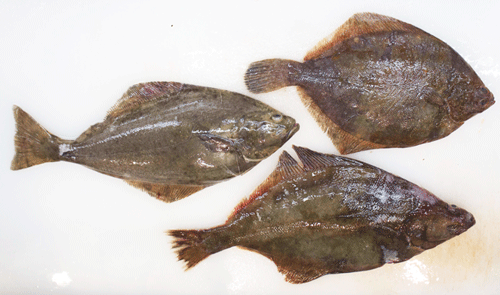
The above image in the three types of flatfish, which arrived from the Hokkaido, the left side of the image is halibut, upper right Rock-sole, lower right is Pointhead flounder.
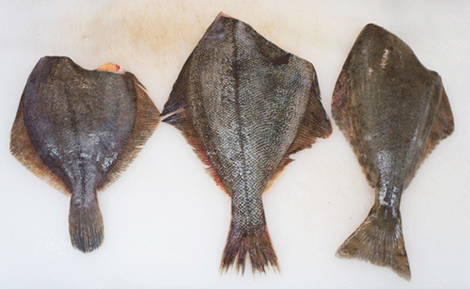
Above in order from left, Rock-sole and Pointhead flounder and halibut, which was removed head.
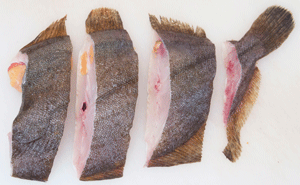
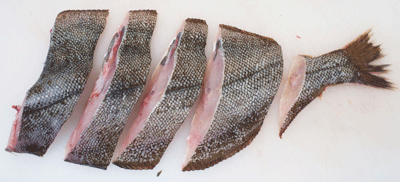
Fillets of Rock-sole is a left image, Pointhead flounder came to the right image.
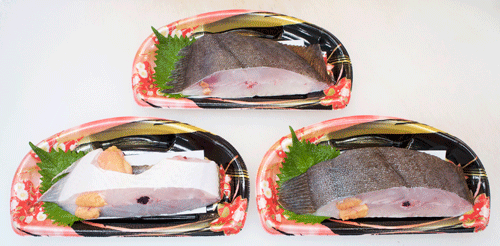
It came to the top and to the commodity as fillets one by one piece Rock-sole.
Rock-sole that many inhabit the sea in the vicinity of Hokkaido in the north belongs to the Pleuronectiformes Pleuronectidae Pleuronectes genus, commonly than as a good student of the flatfish fillets of freshness as above image, frozen flatfish in the supermarket of over-the-counter the familiar of a fish, under the trade name, such as "egg possession flatfish" than named Rock-sole, familiar to many that are sold as flatfish fillets that have been thawed as below image, consumer as it is one of a flatfish.


On the other hand, Pointhead flounder belongs to Pleuronectiformes Pleuronectidae Hippoglossoides genus, of the south than the Rock-sole, many inhabit over the Sea of Japan from northern Japan, in the West are well known in the name, such as "Kitsunekarei" or "Etekarei" This is often sold in supermarkets of over-the-counter exclusively each region unique product name remains fresh fish as the bottom of the image than frozen.
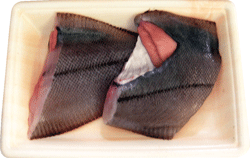

Rock-sole and Pointhead flounder, it is popular as both relatively inexpensive and people are likely to masses specific side dish fish purchase, Rock-sole is often consumed in the region of relatively north than Kanto, Pointhead flounder is mainly have a feature that familiar in western Japan under the name Kitsunekarei to.
Halibut are only caught slightly in the coastal waters of Hokkaido in Japan, not positioned as a major edible fish species rather than professional fishing. Its cuisine is boiled, meuniere, fly, etc. is a major, sometimes good things freshness in some, such as Hokkaido is used, such as in sashimi and sushi. But in the United States and Europe is the importance of as edible fish species rather than a lighter treatment as Japan is in the fairly high position. The start of the catch of halibut from the days of the end of the 19th century in North America, now important has become one of the food fish, in the ordinary anywhere in restaurants in North America in the region, such as Seattle, even in such as fish and chips well it has been utilized.
Since the author has acted as the foundation of the Hakata in Kyushu, a fact, not be eaten even once so far because freshness good halibut sashimi and sushi that are living in the very cold sea of the far north, the Intro image halibut sashimi is the first work that worked on their own, yet he became to be eaten for the first time halibut of sashimi and sushi.
The author is not to dismantle the halibut in five dismantling techniques to use when dismantling the Japanese flounder, it was dismantled in three pieces in the technique of one-sided demolition. Then, even as I was told that it is natural to someone Japanese flounder, fish of meat that would believe unquestioningly the words appeared.
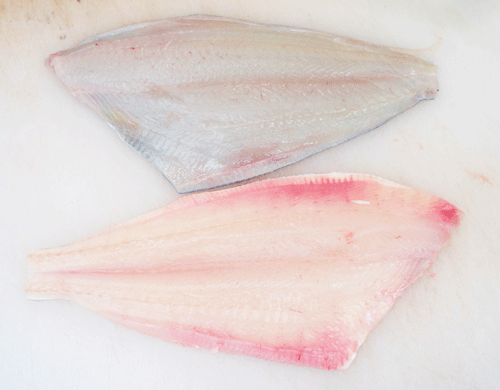
And removal of the skin of the fish, as in the bottom of the image, it looks almost no different fish meat and natural Japanese flounder appeared from under the skin.
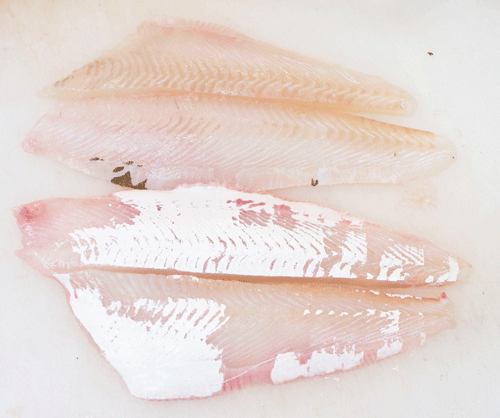
And this and commercialize to nigiri sushi, got to the following image. Look's like a Japanese flounder ....
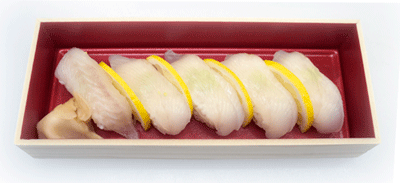
Further advance the knife work, the halibut was try to items all of the sushi nigiri and sashimi, as shown in the following image.

From halibut of about 1.5kg, this way items of a total of 6 pack is finished.
In the supermarket who purchase three types of flatfish good of these freshness, items of sushi and sashimi of halibut is that the view for the first time, although the fillets of Rock-sole and Pointhead flounder gave the fish sales floors as a commodity, of halibut sashimi and sushi is that everyone first experience, became a tasting with everyone for the study of fish taste.
To say that the tasting, matter of course it is not spread only to a limited number of people, when I heard the lucky people of the opinion that was blessed with the tasting, it is generally a quite well received, the author also taste of halibut is really like It was a one person.
Its taste is basically "refreshing taste", and taste chewing the meat, taste of natural fish come out bleeding slowly. The taste is also resemble a Japanese flounder of the same white meat, I felt different from the taste to be felt directly as red meat fish.
A comparison of the sashimi and sushi of halibut, sashimi is a small sense of satisfaction because they lack a direct umami taste, taste of nigiri sushi in that respect is exquisitely matched the sweetness of sushi rice, different from the sashimi balance felt good taste has been pulled out of, halibut felt good to eat in combination with sushi, such as nigiri sushi.
Thing that such halibut sashimi and sushi, also not like to eat anyone at any time, in the workplace of the fish sales floors of this super, to the author himself was supposed to be get to the very valuable experience, people that were in place for tasting also, I think not became a precious place is not necessarily the future same thing can be so many experience.
Because the fish that basically halibut should keep thinking and not be able to easily purchase in the freshness, such as can be to sashimi, most of which have been distributed in the form of frozen fish, it is also the majority of the United States, Alaska and Northern Europe because no doubt it is seen that it is imported fish, such as from Greenland and Iceland.
According to the Wikipedia, English halibut the Pacific Ocean halibut is scientific name Hippoglossus stenolepis, and although Atlantic halibut is the scientific name Hippoglossus hippoglossus, or Greenland halibut scientific name Reinhardtius hippoglossoides of crow flatfish genus in the words of this halibut, Japanese flounder family Japanese flounder genus such as California halibut scientific name Paralichthys californicus, it is also included fish not exactly say when the halibut genus. That designation halibut should think of the nickname attached to a wide range of "large fish of flatfish eyes". (The foregoing description is the contents of the halibut of Wikipedia, but a representation by interpreting the author)
That is not necessarily halibut genus frozen fish that are imported are the halibut and expression, to not be denied is also likely to be a crow flatfish genus and Japanese flounder genus, it is really halibut and that I think that crow flatfish and vice versa even if there is that, it is that it is not any wonder now as the reality of Japan.
For example, because the crow flatfish has been growing very popular in recent years as a product of frozen flatfish fillets, such as the bottom of the image in Japan, it has further crow flatfish resources from the growing popularity in China become a sought after , the distribution prices have also become close to 900 yen / kg, the price has turned into around 2 times that from some years ago.
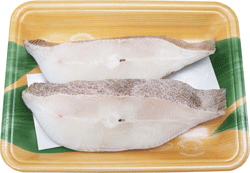
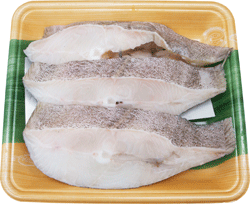
Crow flatfish has maintained high popularity as a fillet of flatfish even now the price has become high, but the growing popularity abroad in some of the frozen fish, for example, the price of the dress as silver cod become a market of 2,000 yen 〜2,400 yen / kg, as a side dish for frozen fish prices have gone no longer say that too also inflated by the masses fish, there is a possibility that the crow flatfish also become the same way.
Frozen side dish fish such as this kind of crow flatfish is going to be transported to a place where there is a need anywhere in the world because can be distributed in the frozen world. So it is impossible to see through the worldwide demand in Japan, there is a side that can not be seen the arrival point of the rising prices.
However On the other hand, luxury fish Japanese flounder in the form similar to flatfish does not stop its quite recent years the distribution price fell to the contrary, as in recent years aquaculture Japanese flounder is a little over 1,000 yen / kg on average in live fish It has become a market rate, which has become impossible to maintain a high price even in the natural product.
In FISH FOOD TIIMES March 2009 issue in the past, but had told the market crash of Japanese flounder, it is the subsequent keynote also market decline was followed.
Major factor in the price of Japanese flounder has declined is because the Korean aquaculture Japanese flounder from more than 20 years ago began to be imported to Japan in live fish. Market price of natural Japanese flounder at the time shortly after 1993 still the start of the import is 2,700 yen / kg before and after as in the table below, about 2,200 yen / kg in aquaculture thing, even in South Korea imports aquaculture Japanese flounder 1,600 yen / kg was about. But then with the increase of imports from South Korea, a natural product of domestic production also fell also affected by the import price aquaculture products, both the rate after 2011 has been sluggish at an average 1,100 yen / kg, before and after.
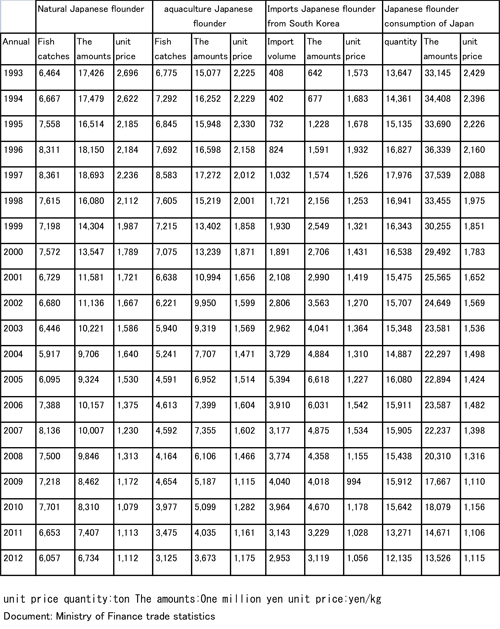
Furthermore, in April 2014 vivid in the memory to eat Japanese flounder that Kudoa has parasitic myxosporea parasitic to the muscle of the fish, going on transient vomiting and diarrhea has occurred "Kudoa poisoning incident", Japanese flounder market It was supposed to be awful. Although this Kudoa is said to be parasitic on each back and forth between the polychaete and (lugworm) and the fish, it does not seem to know yet the ecology is well.
Parasite that Kudoa, either frozen over 15 ℃ ~ over 20 ℃ in 4 hours or more, by heating central temperature 75 ℃ in 5 minutes or more, it has been confirmed that virulence is lost. Since the Japanese flounder is eaten raw as a base is a prerequisite, its value is reduced by half if it refrigeration and heating. So in order to not to drop the value of the Japanese flounder, then domestic established a breeding environment in which there is no ring-shaped animal of lugworm or the like to be a host in the Japanese flounder farms, confirmed that the parasite does not have to go to strictly pre-shipment inspection It had to be shipped. But in August 2015 a large amount of Kudoa to Japanese flounder of imports from Korea was the chilled detected in Japanese flounder market again in Oita Prefecture.
As described above, Japanese flounder is has become a raw food cooking mainly in sashimi and sushi traditionally, its for distribution in live fish has become a basic, since trading at a high price has been treated as a matter of course luxury fish , ever be on store shelves of retail stores as "fillets" for general as flatfish was unreasonable in terms of price.
However, when the price of Japanese flounder comes down to this level, that it is not in any way unreasonable also sell in the fillets, such as in the supermarket fish sales floors that specializes in high-quality products, fillets of aquaculture Japanese flounder, such as the following image is was becoming not so unusual.
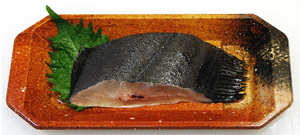
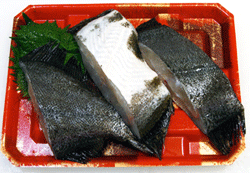
Furthermore not only aquaculture Japanese flounder, depending on natural Japanese flounder also of relatively small size ones and market situation, as shown in the following image, an assortment of natural Japanese flounder fillets are becoming possible in shop front retail.

If it can, freshness good natural Japanese flounder, such as shown in the above image in the vicinity of the shop, when I sold at the right price to buy even without out the courage, I think happy would not the only author.
Well issue this month began in the halibut, Rock-sole, Pointhead flounder, crow flatfish, Japanese flounder, etc., have been mentioned a lot about what kinds of groundfish. In which it is said that only in some as much as 30 different fellow of flatfish that are edible, was covered in this month's issue is only one of only a few.
Although the groundfish such as flatfish and Japanese flounder there are fellow dozens of types, I think that it can be understood that the only part of the book are arranged is narrowed down to the shop of supermarkets and department stores of the fish sales floors and fish retail.
Groundfish as a food fish is because there various In addition to these, groundfish seems to be still potential for "bottomless ...?".
An opinion and the communication are to iinfo@fish food times
Date of updating Feb.1, 2016
